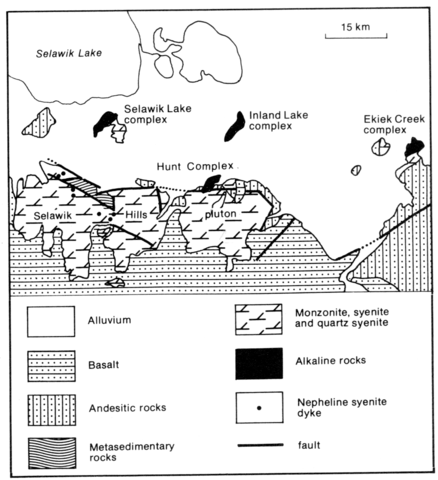stripes
The most easterly of the Kobuk-Selawik Lowland alkaline complexes (Fig. 121), the Ekiek Creek intrusion covers 13 km2 and cuts quartz monzonites along its southern boundary, but there are no contact effects; to the west, north and south it is surrounded by alluvium. The more northerly part consists mainly of malignite and pyroxenite cut by foyaite and juvite. The southern part consists essentially of borolanite with minor biotite, pyroxenite and ijolite. Borolanite and juvite dykes cut the country rocks (Miller, 1972). Rocks described by Wallace and Cody (1977, p. 7) consist of orthoclase, nepheline, biotite, aegirine, melanite and sphene with alteration to zeolites, cancrinite and sericite. Pyroxenites consist predominantly of aegirine-augite and biotite with minor orthoclase, nepheline, sphene and zeolites.
MILLER, T.P. 1972. Potassium-rich alkaline intrusive rocks of western Alaska. Bulletin of the Geological Society of America, 83: 2111-28.
WALLACE, A.R. and CADY, J.W. 1977. Geophysical and petrologic studies of radioactive contact zones of pyroxenite dikes in nepheline syenite of the Ekiek Creek pluton, western Alaska. Circular, United States Geological Survey, 753: 6-8

